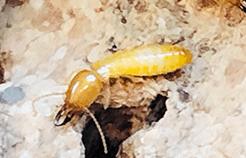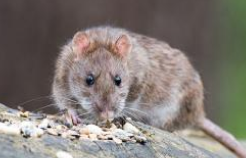Learning Center
Earwigs
The earwig family consists of over 1,000 species worldwide, with about 20 of those present in the United States. These insects derive their common name from the myth that they burrow into the ears of sleeping people to lay eggs in the brain. Though their pincers look ominous, earwigs pose little threat to humans, attacking only if provoked.
What do earwigs look like?
Earwigs are between 1/4” and 1” in length with elongated, flat bodies comprised of a head, thorax, and abdomen. Earwigs also have six legs, two compound eyes, two antennae, two sets of wings, and a pair of pincers, or cerci. These pests are brown or brown-black with a reddish head and yellow-brown legs. The cerci of males are usually more curved than those of females.
Earwigs typically live 1-3 years, growing from egg to nymph to adult in 1-4 months, depending on temperature. Earwigs mate in the autumn, staying together into the winter or spring. After mating, the male leaves and the female adult lays up to 80 eggs. The female tends to the eggs until they hatch into nymphs, keeping them clean, warm, and protected from predators. Nymphs remain with the female, who feeds them until they molt. Nymphs molt five or six more times before they become adults. The female earwig lays eggs twice a year.
What are the unique characteristics of earwigs?
Earwigs are omnivorous, eating plants matter, insects, spiders, and other small arthropods. They will feast on both live and decaying prey and eat flowers, fruit, vegetables, and grass. Some common plant-based foods eaten by the earwig include lettuce, cauliflower, beets, sunflowers, clover, zinnias, strawberries, and blackberries.
What are the habits of earwigs?
Earwigs are most active in the spring, summer, and fall and prefer to come out at night. During the day they hide in dark, moist nooks and crannies. While earwigs typically live outdoors in yard debris, they will move inside in search of food or warmth. They can also be brought inside on newspapers, mail, flowers, building supplies, and other items moved from the outside. Earwigs are also attracted to lights and may move toward them.
Where are earwigs commonly found?
Earwigs live on every continent except Antarctica and are most prevalent in the southern and southwestern areas of the United States. Earwigs make their homes outdoors in grasses and woods or under leaves, rocks, mulch, bark, logs, and lawn clippings. They prefer warm, dark, and moist locations and cannot survive in cold temperatures. During the winter, they burrow underground and hibernate, though many will also move indoors. Once inside, earwigs are attracted to bathrooms, kitchens, basements, and any other area that is damp. They hide in cracks and may climb walls or ceilings.
What are the risks associated with earwigs?
Earwigs pose little to no threat to humans. They are not known to transmit disease and, while it may hurt slightly, being bitten by an earwig is not dangerous. However, because they feed on plant materials, earwigs can cause damage to gardens, crops, and landscaping. Some species also release a foul-smelling yellow liquid.

 (425) 318-7912
(425) 318-7912
 MY ACCOUNT
MY ACCOUNT
 425-318-7912
425-318-7912







